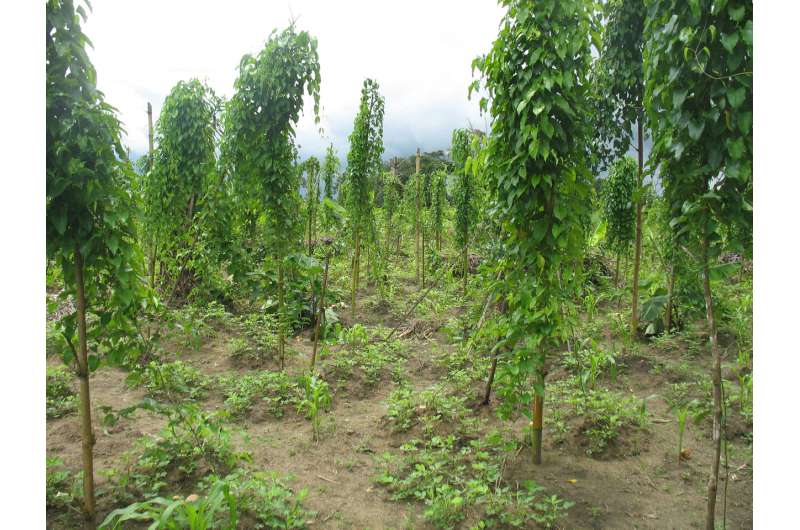May 2, 2019 report
Genetic study of yams adds more evidence of the Niger River Basin serving as a cradle of agriculture

An international team of researchers has found more evidence to support the theory that the Niger River Basin was an early cradle of agriculture. In their paper published in the journal Science Advances, the group describes their genetic analysis of yams and what they found.
The Fertile Crescent in the Middle East gave rise to the domestication of wheat, barley, lentil, oat, chickpea and several other agricultural crops. But other areas around the world have served as a cradle of agriculture, as well—such as parts of China, where the domestication of rice and other crops occurred. In recent years, evidence has mounted for a cradle of agriculture in Africa, in the Niger River Basin. Prior studies have found some evidence suggesting that approximately 6000 years ago, the basin was peppered with lakes, making the entire region moister and more conducive to producing a wide variety of plants that humans in the area could use for food. When the lakes dried up, it appears the people adapted by domesticating their wild food sources. Prior studies have also shown that African rice got its start in West Africa, and some evidence indicates millet domestication there, as well. In this new effort, the researchers took a closer look at yams, a highly important crop in Africa.
The researchers began their work by sequencing the genomes of 167 wild and domesticated yams from multiple sites in Africa. They report that the DNA of savanna yams was similar to modern domesticated yams, and that forest yams fell into two groups. One of those two groups showed the most similarity to modern yams. The second type of forest yam was originally found wild in the Niger River Basin. The researchers found that over time, growers of the tuber had made selective choices to favor those with more robust roots that were better able to reach water—they also selected for more regularly shaped yams and for those with more starch. The same research team carried out a similar study with pearl millet last year, and found that modern domesticated versions also originated in the Niger River Basin.
More information: Nora Scarcelli et al. Yam genomics supports West Africa as a major cradle of crop domestication, Science Advances (2019). DOI: 10.1126/sciadv.aaw1947
Journal information: Science Advances
© 2019 Science X Network





















